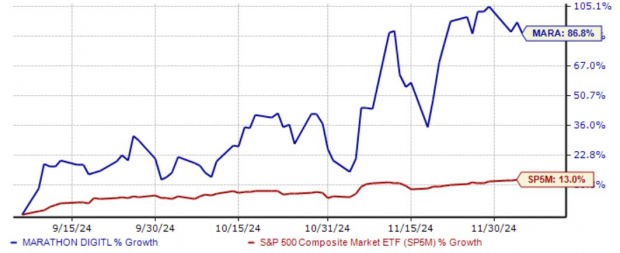
Bitcoin has recently surged past the $100,000 threshold, marking a pivotal moment in its storied history. This milestone is emblematic of the digital currency's maturation and its increasing integration into mainstream financial systems. The rise to this new zenith was not merely a result of speculative fervor but was underpinned by a confluence of regulatory, technological, and macroeconomic factors. Understanding these dynamics provides key insights into Bitcoin's current trajectory and its potential implications for future market trends.

Regulatory Clarity and Institutional Involvement
One of the most significant drivers of Bitcoin's ascent has been the regulatory clarity emerging from key global markets. In the United States, the approval of Bitcoin exchange-traded funds (ETFs) by the Securities and Exchange Commission (SEC) has provided both legitimacy and liquidity to the crypto market. The debut of these ETFs, including those from financial juggernauts like BlackRock and Grayscale, saw trading volumes soar, with Grayscale's ETF alone witnessing $1 billion in trades in just 90 minutes of opening, according to Bloomberg Intelligence.
The impact of institutional investors cannot be overstated. Their entry into the market has not only increased liquidity but also introduced a level of stability that was previously absent. As noted by Todd Rosenbluth of VettaFi, the switch from Grayscale’s Bitcoin Trust to the newly launched ETFs reflects a strategic rotation by investors seeking lower fees and more straightforward exposure to Bitcoin.
Macroeconomic Tailwinds
The macroeconomic environment has also played a pivotal role in Bitcoin's rise. As global economies grapple with inflationary pressures and central banks maintain low interest rates, Bitcoin has emerged as a hedge against currency devaluation. This sentiment is echoed by Delphi Digital, which highlights how easing liquidity conditions could continue to favor risk assets like Bitcoin in 2025 (Delphi Digital).
Moreover, geopolitical developments, particularly those related to the US elections and shifting international policies on digital assets, have further bolstered Bitcoin's appeal. The Trump administration's emphasis on blockchain innovation and its strategy to curb illicit finance while fostering technological advancement has set a conducive backdrop for Bitcoin's growth (TRM Labs).
Technological Advancements and Market Sentiment
Technological advancements in blockchain infrastructure have significantly enhanced Bitcoin's scalability and utility. Improvements in transaction processing speeds and the rollout of second-layer solutions have made Bitcoin more accessible and practical for everyday transactions. This has been further complemented by the growing adoption of Bitcoin as a payment mechanism by major corporations and payment platforms like PayPal, which now allows users to buy, hold, and sell Bitcoin directly through their accounts (PayPal).
Investor sentiment has also shifted. Once considered a speculative asset, Bitcoin is now viewed as a viable long-term investment. This change is reflected in the increasing number of high-net-worth individuals and family offices allocating a portion of their portfolios to Bitcoin. According to a Pew Research Center study, while a majority of Americans remain skeptical about cryptocurrency's safety and reliability, a significant minority is increasingly confident in its potential, particularly those who are already invested (Pew Research).
Challenges and Risks Ahead
Despite the positive momentum, Bitcoin's journey to $100,000 is not without its challenges. Regulatory risks remain, especially as governments worldwide continue to navigate the complex landscape of digital assets. The possibility of stricter regulations, particularly concerning anti-money laundering and tax compliance, could impact market dynamics.
Moreover, technological vulnerabilities, such as those exposed in past exchange hacks, continue to pose significant risks. The evolving nature of cyber threats necessitates robust security measures, both at the individual and institutional levels. The role of blockchain intelligence in countering these threats is becoming increasingly critical, as highlighted by the effective recovery of funds in high-profile cybercrime cases (TRM Labs).
The Road Ahead
As Bitcoin charts a course beyond $100,000, several factors will shape its future trajectory. The continued maturation of the crypto market, driven by technological innovation and regulatory developments, will be pivotal. The interplay between traditional financial systems and decentralized finance will also play a crucial role in determining Bitcoin's place in the global financial ecosystem.
In conclusion, Bitcoin's rise to $100,000 is a testament to its evolving role as a financial asset. While challenges remain, the opportunities for growth and innovation in the cryptocurrency space are immense. As regulatory frameworks solidify and technological advancements continue, Bitcoin is poised to further entrench itself as a cornerstone of the modern financial landscape. Investors and market participants must stay informed and adaptable to navigate the complexities of this dynamic environment.